Emission Monitoring Systems Market Size
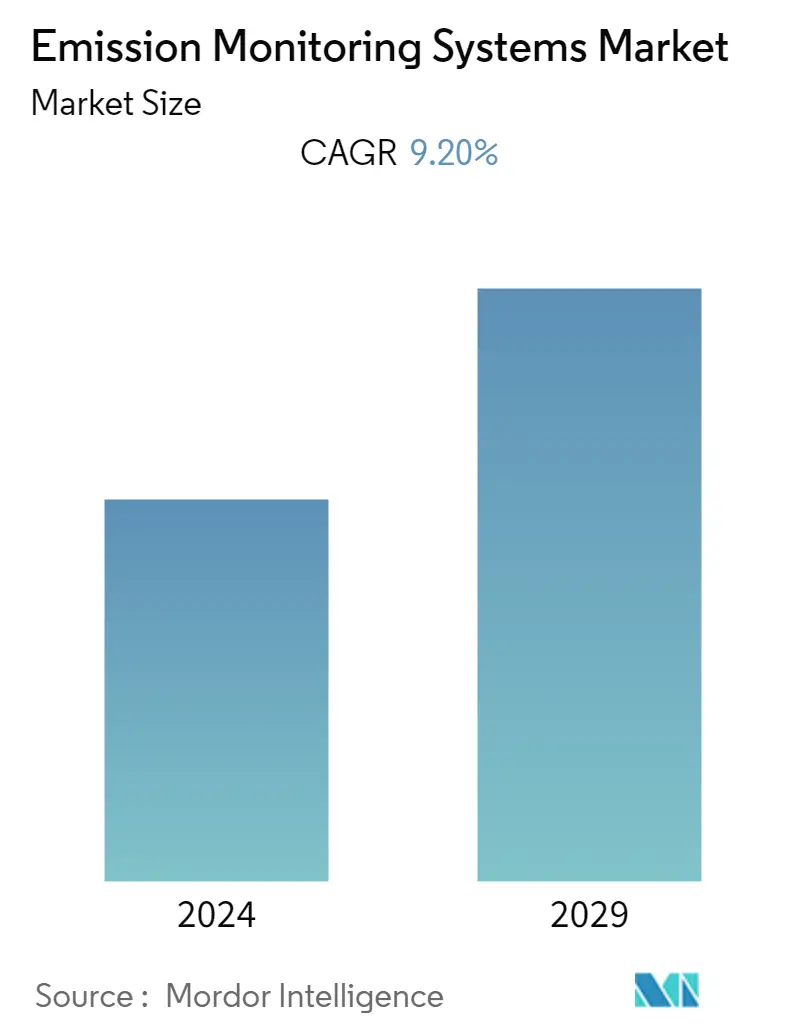
| Study Period | 2019 - 2029 |
| Base Year For Estimation | 2023 |
| CAGR | 9.20 % |
| Fastest Growing Market | Asia Pacific |
| Largest Market | North America |
| Market Concentration | Medium |
Major Players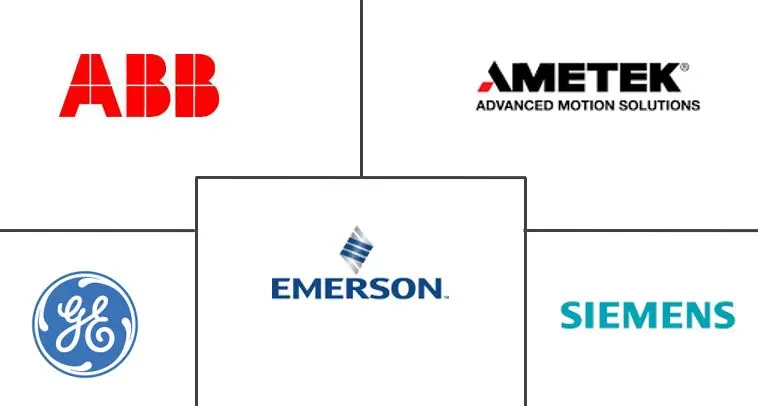
*Disclaimer: Major Players sorted in no particular order |
Emission Monitoring Systems Market Analysis
The Emission Monitoring Systems Market is expected to grow at a CAGR of 9.2% during the forecast period. The major factors driving the growth of the market include stringent legal and environmental regulations made by governments across the globe, increasing health and safety issues, increasing awareness about environmental protection, and growing usage of oil & gas and petrochemicals.
- The emission monitoring system measures various gases in the air, such as carbon dioxide, nitrogen, mercury, sulfur dioxide, carbon monoxide, and hexavalent chromium. In the continuous type system, the analyzer is primarily used to measure the gases emitted, whereas the software component enables the users to evaluate the results of the applicable emission. The predictive type system uses modeling software to calculate the emission rate, which is based on the control device operating parameters and enables the user to predict the emission levels.
- Using these emission monitoring systems to comply with the emission standards created by the government is one of the major considerations from the market growth perspective. For instance, the United States Environmental Protection Agency has rolled out multiple federal programs to monitor emissions in the region. Moreover, state authorities' continuous collection of emission data has thrust the market.
- Various governments adopt regulations to control industrial activity emissions, boosting the market. For instance, the Department of Environment, Malaysia, deployed the Environmental Quality Act 1974 and Clean Air Regulation 2014, which has Regulation 7 Air Pollution Control System and Regulation 9 - Performance Monitoring of Air Pollution Control System, to control air pollution. All these factors are forcing the government to use emissions monitoring systems.
- With the recent COVID-19 outbreak, the emissions monitoring systems are playing a crucial role in monitoring the air quality and providing necessary information during this pandemic, as COVID-19 is an infectious respiratory disease, and air quality affects respiratory health. On April 22, 2020, the data analytics company, EMSOL, announced working with Network Rail to monitor air quality in train stations and implement a strategy to lower the pollution around them. The project mostly benefits patients recovering from COVID-19 and people with respiratory issues exposed to poor air quality in busy areas.
- During the forecast period, the growing emphasis on clean energy is expected to hinder the growth of the global emission monitoring system market. Renewable energy has grown in popularity since the beginning of the century. Many countries are making significant efforts to produce renewable energy sources that are sustainable, reliable, and efficient, such as solar power, wind power, and bioenergy. These energy sources are assumed to replace existing conventional energy sources. As a result, to reduce CO2 emissions, the world must rapidly transition to a low-carbon energy source. As a result, an emission monitoring system is no longer required.
Emission Monitoring Systems Market Trends
This section covers the major market trends shaping the Emission Monitoring Systems Market according to our research experts:
Oil & Gas Segment is Expected to Witness Significant Growth
- The EPA's (Environmental Protection Agency) air pollution and clean air act have set a limit on the in-stack emission of pollutant concentrations at the point of release for various industries such as power plants, oil & gas, and building materials are thereby required to maintain their emission monitoring standards continue to have an operating license. Under the EPA regulations, implementing a CEMS is necessary for continuous compliance determination or exceeding set standards.
- The rapid growth of the crude oil and natural gas infrastructure across the globe and several power generation facilities is also expected to play a crucial role in driving the demand for these systems over the forecast period.
- For instance, according to EIA, the U.S. electric power sector's carbon dioxide emissions from selected fuels from 2015 with projections to 2050 by fuel. It is estimated that 685 million metric tons of carbon dioxide will be produced using natural gas in the U.S. electric power sector in 2050.
- Emission monitoring systems are primarily deployed in the oil and gas industry to measure and minimize the emission of hazardous chemicals such as methane, carbon dioxide, and sulfur dioxide, among others, and to gather the required data for reporting emissions released to government regulatory agencies such as the industrial emissions directive (IED) by the European Parliament and the Council on industrial emissions and clean air act by the EPA in the United States.
- The members of the Oil and Gas Climate Initiative (OGCI) aimed to reduce methane emissions by 0.25% by 2025. This would be one-fifth of the levels in 2017. This is expected to reduce methane emissions by 350,000 tonnes per year (approximately 8.8 million tonnes of CO2 equivalent). As BP and EOG (among others) have stated in their strategies, digital technologies are poised to be critical in tracking emissions by site and recording progress. The OGCI has invested in emissions monitoring via sensors, satellites, and reporting in five of its twelve investments. Such trends and initiatives are expected to boost market growth even further.
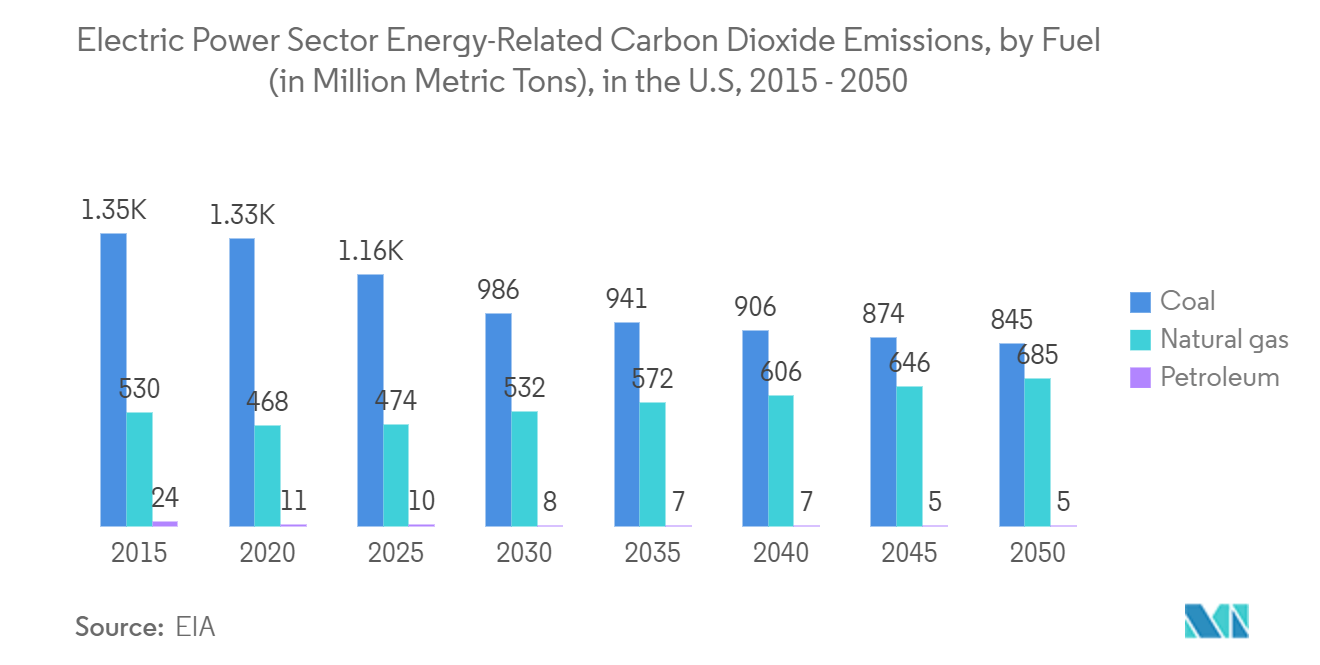
North America to Hold Significant Market Share
- The US Environmental Protection Agency is committed to the protection of public health by the improvement of air quality and the reduction of air pollution. The implementation of the Clean Air Act in the United States and the technological advancements, since then, from multiple innovators have dramatically improved the air quality in the country, as cleaner air provides significant public health benefits.
- The EPA primarily works with the state, local, and tribal governments to reduce more than 180 hazardous air pollutants emissions. Moreover, the fine particles in smoke can cause many health problems, such as burning eyes, runny nose, and illnesses like bronchitis. These microscopic particles can also cause chronic heart and lung diseases, one of the major factors driving the demand for emissions monitoring systems.
- Many provinces and states are taking the lead in transitioning to clean energy by introducing policies that promote energy efficiency and carbon management. For instance, British Columbia's CleanBC Plan has set provincial targets for significantly reducing emissions by 40% from FY 2005 levels by FY 2030, then 60% by FY 2040, and 80% by FY 2050.
- Government initiatives to reduce energy emissions from various old and public buildings are also increasing market demand. For example, the US General Services Administration signed a contract with IBM Corporation to install efficient and smart building technologies in 50 of the state and federal governments' most energy-consuming buildings.
- Furthermore, in the United States, any power plant larger than 25 megawatts, including generators at universities, is equipped with a continuous emissions monitoring system, as data quality is critical. Vendors are developing better data-driven tools to improve the quality of CEMS (Continuous Emission Monitoring System) data.
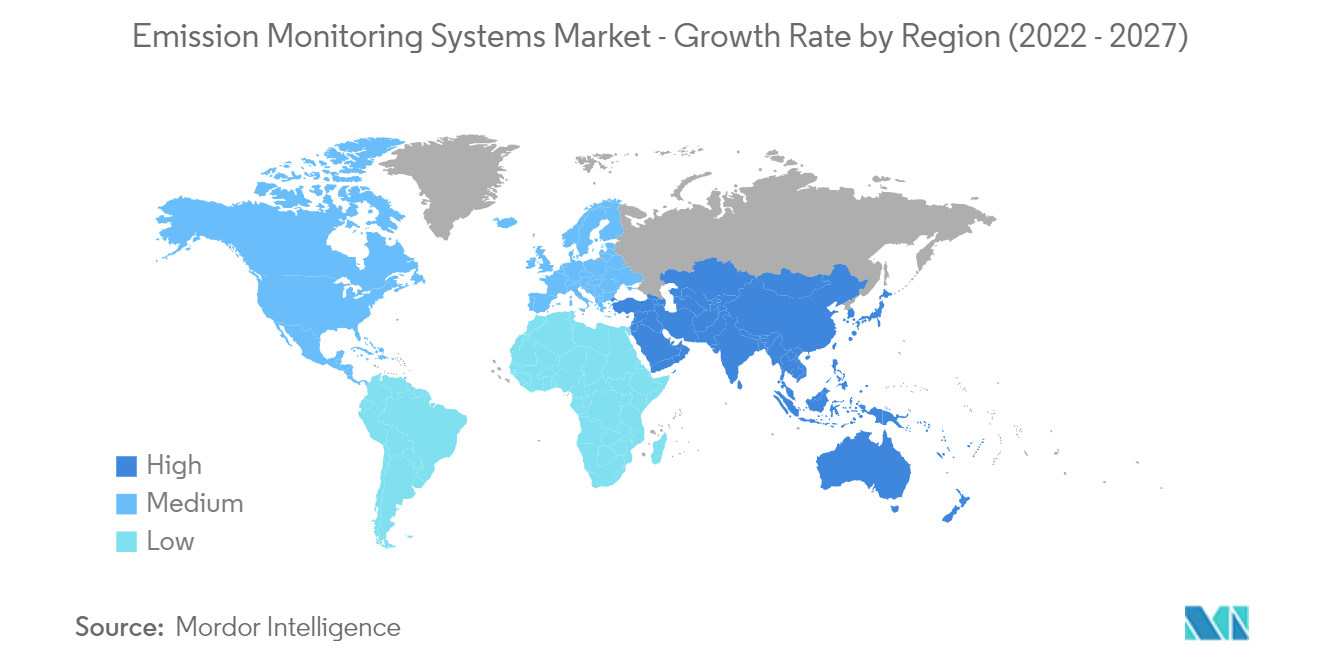
Emission Monitoring Systems Industry Overview
The emission monitoring systems market is highly competitive owing to the presence of many players in the market supplying their products in domestic and international markets. The market appears to be moderately concentrated. The major players are adopting strategies such as product innovation, mergers, acquisitions, and strategic partnerships to stay competitive in the market and expand their geographic reach. Some major players in the market are ABB Ltd., Emerson Electric Co., Siemens AG, and Rockwell Automation, Inc., among others.
- October 2021 - ENVEA introduced Mercury Continuous Emissions Monitoring System SM-5. This analyzer is designed to provide accurate and reliable measurement of very low concentrations of mercury in flue gas emissions.
- September 2021 - Emerson introduced the new Rosemount XE10 Continuous Emissions Monitoring System (CEMS), designed to help industrial plants meet increasingly stringent environmental regulations and evolving sustainability demands. With its built-in performance analytics and automated validation capabilities, the new system ensures accurate emissions monitoring and reporting to help plant operators reduce the risk of non-compliance shutdowns and penalties.
Emission Monitoring Systems Market Leaders
-
ABB Ltd.
-
AMETEK, Inc.
-
Emerson Electric Co.
-
General Electric Company
-
Siemens AG
*Disclaimer: Major Players sorted in no particular order
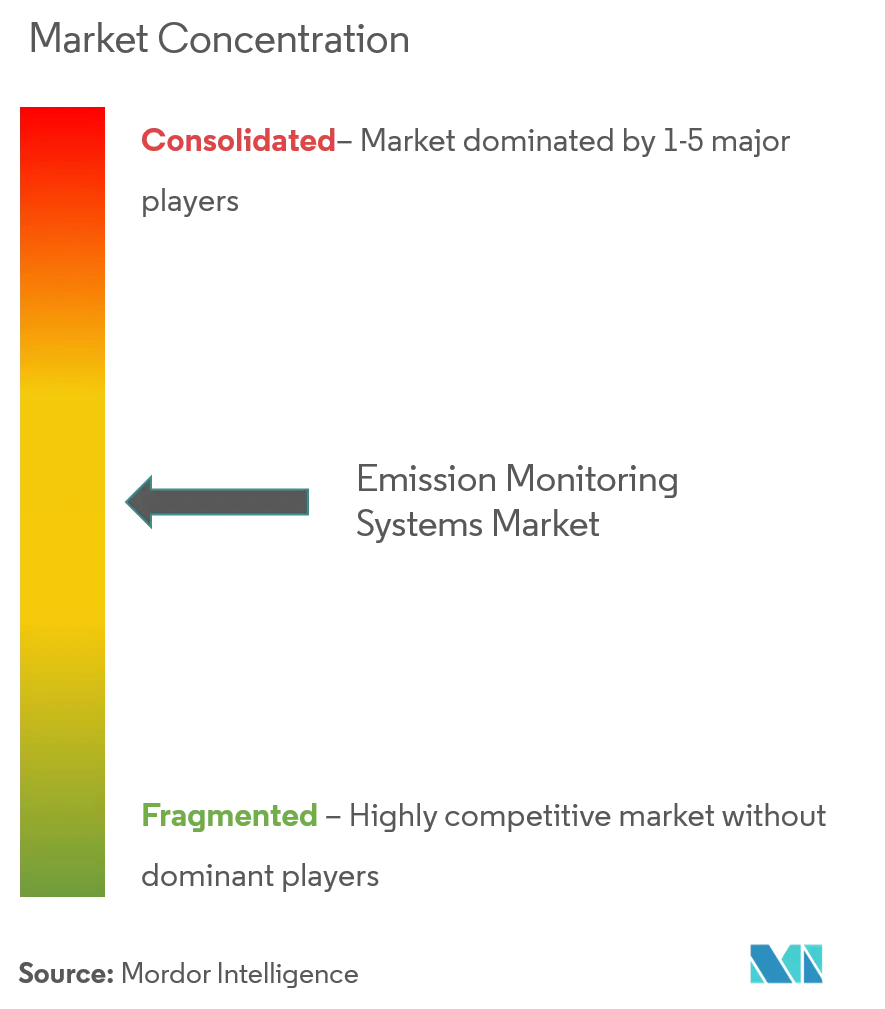
Emission Monitoring Systems Market News
- April 2022 - ClassNK has launched 'ClassNK ZETA (Zero Emission Transition Accelerator),' a GHG emissions management tool that allows users to track accurate CO2 emissions and confirm and simulate CII ratings.
- March 2022 - A Google-backed Swedish start-up, Normative, released a free version of its carbon emissions tracker. It was designed to assist small businesses in establishing a baseline understanding of their emissions. Normative's Business Carbon Calculator assists small and medium-sized businesses in monitoring their carbon emissions and locating emission hotspots based on data such as facility size and how much they spend on heating, electricity, and gas. For larger businesses, Normative also provides paid products.
Emission Monitoring Systems Market Report - Table of Contents
1. INTRODUCTION
- 1.1 Study Assumptions and Market Definition
- 1.2 Scope of the Study
2. RESEARCH METHODOLOGY
3. EXECUTIVE SUMMARY
4. MARKET INSIGHTS
- 4.1 Market Overview
-
4.2 Industry Attractiveness - Porter's Five Forces Analysis
- 4.2.1 Bargaining Power of Suppliers
- 4.2.2 Bargaining Power of Buyers
- 4.2.3 Threat of New Entrants
- 4.2.4 Threat of Substitutes
- 4.2.5 Intensity of Competitive Rivalry
- 4.3 Industry Value Chain Analysis
- 4.4 Assessment of COVID-19 Impact on the Market
5. MARKET DYNAMICS
-
5.1 Market Drivers
- 5.1.1 Stringent Legal and Environmental Regulations
- 5.1.2 Increasing Health and Safety Issues
-
5.2 Market Restraints
- 5.2.1 High Cost of These Systems for Regular Maintenance
6. MARKET SEGMENTATION
-
6.1 By Component
- 6.1.1 Hardware
- 6.1.2 Software
- 6.1.3 Service
-
6.2 By End User
- 6.2.1 Oil & Gas
- 6.2.2 Metal and Mining
- 6.2.3 Pharmaceutical
- 6.2.4 Power Generation
- 6.2.5 Chemicals
- 6.2.6 Other End Users
-
6.3 Geography
- 6.3.1 North America
- 6.3.2 Europe
- 6.3.3 Asia-Pacific
- 6.3.4 Latin America
- 6.3.5 Middle-East and Africa
7. COMPETITIVE LANDSCAPE
-
7.1 Company Profiles
- 7.1.1 ABB Ltd
- 7.1.2 AMETEK, Inc.
- 7.1.3 Emerson Electric Co.
- 7.1.4 General Electric Company
- 7.1.5 Siemens AG
- 7.1.6 Horiba Ltd.
- 7.1.7 Rockwell Automation, Inc.
- 7.1.8 Sick AG
- 7.1.9 Teledyne Technologies, Inc.
- 7.1.10 Thermo Fisher Scientific Inc.
- *List Not Exhaustive
8. INVESTMENT ANALYSIS
9. FUTURE OF THE MARKET
** Subject To AvailablityEmission Monitoring Systems Industry Segmentation
Emission monitoring systems are used to monitor various gases, such as oxygen, carbon monoxide, and carbon dioxide, to furnish adequate information for combustion control in the industrial environment. These systems are a means to adhere to air emission standards, followed by various regulatory bodies across the world.
The report covers various type of emissions monitoring systems, ranging from hardware, software, and services that are used by different end users across various geographies.
| By Component | Hardware |
| Software | |
| Service | |
| By End User | Oil & Gas |
| Metal and Mining | |
| Pharmaceutical | |
| Power Generation | |
| Chemicals | |
| Other End Users | |
| Geography | North America |
| Europe | |
| Asia-Pacific | |
| Latin America | |
| Middle-East and Africa |
Emission Monitoring Systems Market Research FAQs
What is the current Emission Monitoring Systems Market size?
The Emission Monitoring Systems Market is projected to register a CAGR of 9.20% during the forecast period (2024-2029)
Who are the key players in Emission Monitoring Systems Market?
ABB Ltd., AMETEK, Inc., Emerson Electric Co., General Electric Company and Siemens AG are the major companies operating in the Emission Monitoring Systems Market.
Which is the fastest growing region in Emission Monitoring Systems Market?
Asia Pacific is estimated to grow at the highest CAGR over the forecast period (2024-2029).
Which region has the biggest share in Emission Monitoring Systems Market?
In 2024, the North America accounts for the largest market share in Emission Monitoring Systems Market.
What years does this Emission Monitoring Systems Market cover?
The report covers the Emission Monitoring Systems Market historical market size for years: 2019, 2020, 2021, 2022 and 2023. The report also forecasts the Emission Monitoring Systems Market size for years: 2024, 2025, 2026, 2027, 2028 and 2029.
Emission Monitoring Systems Industry Report
Statistics for the 2024 Emission Monitoring Systems market share, size and revenue growth rate, created by Mordor Intelligence™ Industry Reports. Emission Monitoring Systems analysis includes a market forecast outlook 2029 and historical overview. Get a sample of this industry analysis as a free report PDF download.



